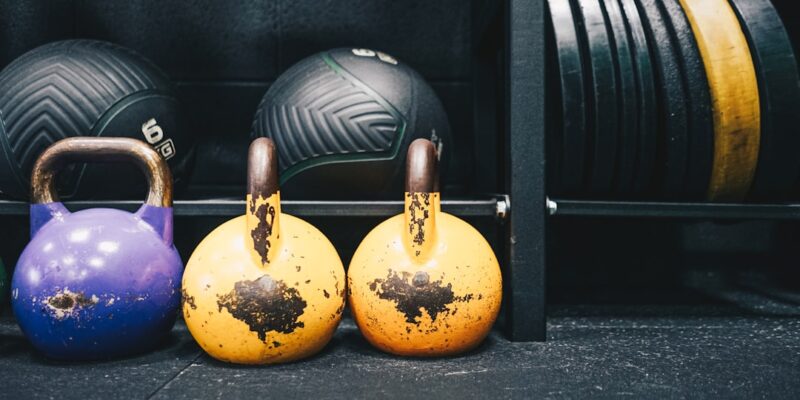
Foam Rolling Techniques: Muscle Recovery Made Easy
Foam rolling has become increasingly popular in recent years as a tool for muscle recovery. Whether you’re an athlete, a fitness enthusiast, or someone who simply wants to alleviate muscle soreness and improve flexibility, foam rolling can be a valuable addition to your routine. In this article, we will explore the benefits of foam rolling for muscle recovery and provide a comprehensive guide on how to effectively and safely incorporate it into your post-workout routine.
Key Takeaways
- Foam rolling is a self-myofascial release technique that helps to improve muscle recovery and reduce muscle soreness.
- There are different types of foam rollers available in the market, including high-density, low-density, textured, and vibrating foam rollers.
- When choosing a foam roller, consider your fitness level, the intensity of your workouts, and the specific muscle groups you want to target.
- Foam rolling can help improve flexibility, increase blood flow, and reduce the risk of injury when incorporated into your post-workout routine.
- To foam roll effectively and safely, start with gentle pressure and gradually increase intensity, focusing on specific muscle groups for 30-60 seconds at a time.
What is foam rolling and why is it important for muscle recovery?
Foam rolling is a self-myofascial release technique that involves using a foam roller to apply pressure to specific areas of the body. The goal is to release tension and tightness in the muscles and fascia, which can help improve circulation, reduce muscle soreness, and enhance overall muscle recovery.
When we exercise, our muscles undergo stress and strain, leading to the formation of adhesions or knots in the muscle tissue. These adhesions can restrict blood flow and limit the range of motion, resulting in muscle soreness, stiffness, and decreased performance. Foam rolling helps break up these adhesions and promotes blood flow to the muscles, allowing them to recover faster and more effectively.
Scientifically, foam rolling works by stimulating the Golgi tendon organs and mechanoreceptors in the muscles. This stimulation triggers a relaxation response in the muscles, reducing muscle tension and promoting a sense of relaxation. Additionally, foam rolling increases blood flow to the muscles, which helps deliver oxygen and nutrients needed for repair and recovery.
Understanding the different types of foam rollers available in the market
There are several types of foam rollers available in the market, each with its own unique characteristics and benefits. The most common types include:
1. EVA Foam Rollers: These are the most basic type of foam rollers and are typically made from high-density EVA foam. They are lightweight, affordable, and suitable for beginners. EVA foam rollers provide a moderate amount of pressure and are ideal for general muscle recovery and maintenance.
2. High-Density Foam Rollers: These foam rollers are made from a denser foam material, which provides a firmer and deeper massage. They are suitable for individuals who prefer a more intense pressure and want to target specific muscle groups. High-density foam rollers are often recommended for athletes and experienced foam roller users.
3. Grid Foam Rollers: Grid foam rollers have a textured surface with raised bumps or ridges that mimic the hands of a massage therapist. This textured surface helps to target specific areas of the body more effectively and provides a deeper massage. Grid foam rollers are versatile and can be used for both muscle recovery and self-massage.
4. Vibrating Foam Rollers: These foam rollers have built-in vibration mechanisms that provide an additional level of stimulation to the muscles. The vibrations help to relax the muscles and increase blood flow, enhancing the benefits of foam rolling. Vibrating foam rollers are often used by athletes and individuals with chronic muscle tension or pain.
Each type of foam roller has its own pros and cons. EVA foam rollers are affordable and suitable for beginners, but they may not provide enough pressure for individuals with tight muscles. High-density foam rollers offer a deeper massage but can be too intense for some individuals. Grid foam rollers provide targeted relief but may be uncomfortable for those with sensitive skin. Vibrating foam rollers offer an added level of stimulation but tend to be more expensive.
How to choose the right foam roller for your needs and fitness level
| Factors to Consider | Importance | Options |
|---|---|---|
| Density | High | Low, Medium, High |
| Size | Medium | Small, Medium, Large |
| Texture | Medium | Smooth, Bumpy, Grid |
| Shape | Low | Straight, Curved, Half-Round |
| Price | Low | 10-50 |
When choosing a foam roller, there are several factors to consider, including density, size, and texture.
Density refers to the firmness of the foam roller. A higher density foam roller will provide a deeper massage, while a lower density foam roller will be softer and more forgiving. Beginners may want to start with a lower density foam roller and gradually progress to a higher density as their muscles become more accustomed to the pressure.
Size is another important consideration. Foam rollers come in various lengths and diameters. Longer foam rollers are better for targeting larger muscle groups, while shorter foam rollers are more suitable for smaller areas or travel purposes. The diameter of the foam roller also affects the intensity of the massage. A larger diameter will provide a gentler massage, while a smaller diameter will be more intense.
Texture refers to the surface of the foam roller. Smooth foam rollers provide a more general massage, while textured foam rollers offer a deeper and more targeted massage. The choice between smooth and textured foam rollers depends on personal preference and sensitivity.
For beginners, it is recommended to start with a medium-density foam roller that is around 18-24 inches in length and 6 inches in diameter. This size and density provide a good balance between comfort and effectiveness. As you become more experienced and your muscles adapt to the pressure, you can gradually progress to a higher density or try different textures to target specific areas.
The benefits of incorporating foam rolling into your post-workout routine
Incorporating foam rolling into your post-workout routine can provide numerous benefits for muscle recovery. Some of the key benefits include:
1. Muscle soreness and stiffness relief: Foam rolling helps to break up adhesions and knots in the muscles, reducing muscle soreness and stiffness. By applying pressure to specific areas, you can release tension and promote blood flow, allowing the muscles to recover faster.
2. Improved flexibility and range of motion: Foam rolling helps to improve flexibility by increasing the elasticity of the muscles and fascia. By releasing tightness and restrictions in the muscles, you can enhance your range of motion and prevent injuries.
3. Enhanced performance: Foam rolling can help improve performance by increasing blood flow to the muscles, which provides them with oxygen and nutrients needed for optimal function. Additionally, foam rolling helps to activate and wake up the muscles, preparing them for the demands of exercise.
4. Injury prevention: By releasing tension and tightness in the muscles, foam rolling can help prevent injuries. When the muscles are loose and flexible, they are less likely to be strained or pulled during physical activity.
5. Improved recovery time: Foam rolling promotes blood flow and circulation, which helps deliver oxygen and nutrients to the muscles for repair and recovery. By incorporating foam rolling into your post-workout routine, you can speed up the recovery process and reduce downtime between workouts.
Step-by-step guide on how to foam roll effectively and safely
To foam roll effectively and safely, it is important to follow proper technique and take certain precautions. Here is a step-by-step guide on how to foam roll:
1. Precautions: Before you start foam rolling, make sure to warm up your muscles with some light cardio or dynamic stretching. It is also important to listen to your body and avoid rolling over any areas that are painful or injured.
2. Positioning: Position yourself on top of the foam roller with the targeted muscle group in contact with the roller. Use your hands and feet to support your body weight and control the pressure applied.
3. Pressure: Apply moderate pressure to the muscle by using your body weight. Start with gentle pressure and gradually increase as tolerated. Avoid applying excessive pressure that causes pain or discomfort.
4. Roll: Slowly roll back and forth along the length of the muscle, focusing on any tight or tender spots. Spend about 30-60 seconds on each area before moving on to the next.
5. Breathe: Remember to breathe deeply and relax as you foam roll. Deep breathing helps to relax the muscles and enhance the benefits of foam rolling.
6. Frequency: Foam rolling can be done both before and after a workout. It is recommended to foam roll for at least 5-10 minutes before a workout to warm up the muscles and prepare them for exercise. After a workout, foam rolling for 10-15 minutes can help with muscle recovery and relaxation.
Common mistakes to avoid when foam rolling to prevent injury
While foam rolling can be highly beneficial, there are some common mistakes that people make that can lead to injury. Here are some mistakes to avoid:
1. Rolling too fast: Rolling too quickly over the muscles can be ineffective and may cause unnecessary strain. It is important to roll slowly and deliberately, focusing on each area for an adequate amount of time.
2. Applying too much pressure: Applying excessive pressure can cause pain and discomfort, and may even lead to bruising or tissue damage. Start with moderate pressure and gradually increase as tolerated.
3. Rolling directly on joints or bony areas: Foam rolling should be done on the muscles, not directly on joints or bony areas. Avoid rolling over the spine, knees, elbows, or any other areas where bones are close to the surface.
4. Neglecting proper form: It is important to maintain proper form and alignment while foam rolling. Avoid slouching or arching your back, and keep your core engaged to support your body weight.
5. Foam rolling injured or inflamed areas: If you have an injury or inflammation in a specific area, it is best to avoid foam rolling that area until it has healed. Foam rolling over injured or inflamed tissues can exacerbate the condition and delay the healing process.
To prevent injury, it is important to listen to your body and adjust the pressure and technique as needed. If you experience any pain or discomfort while foam rolling, stop immediately and consult with a healthcare professional.
Using foam rolling to target specific muscle groups and alleviate pain
Foam rolling can be used to target specific muscle groups and alleviate pain in those areas. Here are some common muscle groups that can benefit from foam rolling:
1. Quadriceps: To foam roll the quadriceps, position yourself face down with the foam roller placed under the front of your thighs. Use your hands and feet to support your body weight and roll back and forth along the length of the thighs.
2. Hamstrings: To foam roll the hamstrings, position yourself sitting on the foam roller with your legs extended in front of you. Use your hands to support your body weight and roll back and forth along the length of the hamstrings.
3. Calves: To foam roll the calves, position yourself sitting on the floor with the foam roller placed under your calves. Use your hands to support your body weight and roll back and forth along the length of the calves.
4. IT band: To foam roll the IT band, position yourself lying on your side with the foam roller placed under the side of your thigh. Use your hands and feet to support your body weight and roll back and forth along the length of the IT band.
5. Glutes: To foam roll the glutes, position yourself sitting on the foam roller with one leg crossed over the other. Lean to one side and place your weight on the glute of the crossed leg. Roll back and forth along the glute area.
By targeting specific muscle groups with foam rolling, you can release tension and alleviate pain in those areas. It is important to spend enough time on each muscle group to effectively release tightness and adhesions.
Foam rolling for injury prevention and rehabilitation
Foam rolling can be a valuable tool for injury prevention and rehabilitation. Here’s how it can help:
1. Injury prevention: Foam rolling helps to release tension and tightness in the muscles, which can prevent injuries such as strains or pulls. By incorporating foam rolling into your regular routine, you can keep your muscles loose and flexible, reducing the risk of injury during physical activity.
2. Rehabilitation: If you have an existing injury, foam rolling can aid in the rehabilitation process. By applying pressure to the affected area, you can increase blood flow and promote healing. Foam rolling can also help to break up scar tissue and adhesions that may have formed as a result of the injury.
It is important to note that foam rolling should not replace proper medical treatment or rehabilitation exercises prescribed by a healthcare professional. If you have a serious injury or are unsure about how to incorporate foam rolling into your rehabilitation program, it is best to consult with a healthcare professional.
Combining foam rolling with other recovery techniques for optimal results
While foam rolling can be highly effective on its own, combining it with other recovery techniques can further enhance its benefits. Here are some other recovery techniques that can be combined with foam rolling:
1. Stretching: Foam rolling can be followed by static stretching or dynamic stretching to further improve flexibility and range of motion. Stretching helps to lengthen the muscles and prevent them from becoming tight or stiff.
2. Massage: Foam rolling can be complemented with professional massage therapy or self-massage techniques such as using massage balls or massage sticks. Massage helps to release tension and knots in the muscles, promoting relaxation and recovery.
3. Cold therapy: After foam rolling, applying cold therapy such as ice packs or cold showers can help reduce inflammation and muscle soreness. Cold therapy constricts blood vessels and reduces swelling, which can aid in the recovery process.
4. Heat therapy: Alternatively, heat therapy such as hot packs or warm baths can be used after foam rolling to promote blood flow and relaxation. Heat therapy helps to relax the muscles and relieve muscle soreness.
By combining foam rolling with other recovery techniques, you can create a comprehensive recovery plan that addresses different aspects of muscle recovery and promotes optimal results.
Frequently asked questions about foam rolling and muscle recovery
1. Is foam rolling painful?
Foam rolling can be uncomfortable, especially if you have tight muscles or trigger points. However, it should not be excessively painful. If you experience sharp or intense pain while foam rolling, it is best to stop and consult with a healthcare professional.
2. How often should I foam roll?
The frequency of foam rolling depends on your individual needs and goals. Generally, it is recommended to foam roll at least 2-3 times per week for maintenance and muscle recovery. However, if you have specific areas of tightness or soreness, you may benefit from foam rolling daily or even multiple times a day.
3. Can foam rolling replace stretching?
Foam rolling and stretching are complementary techniques that can both improve flexibility and range of motion. While foam rolling helps release tension in the muscles, stretching helps lengthen the muscles and improve their elasticity. It is recommended to incorporate both foam rolling and stretching into your routine for optimal results.
4. Can I foam roll before a workout?
Foam rolling before a workout can help warm up the muscles and prepare them for exercise. By increasing blood flow and activating the muscles, foam rolling can enhance performance and reduce the risk of injury. It is recommended to foam roll for at least 5-10 minutes before a workout.
5. Can I foam roll if I have an injury?
If you have an injury, it is best to consult with a healthcare professional before incorporating foam rolling into your routine. While foam rolling can aid in relieving muscle tension and improving flexibility, it may not be suitable for all injuries. A healthcare professional can assess your injury and provide guidance on whether foam rolling is safe and beneficial for your specific condition. They can also recommend specific foam rolling techniques that target the affected area without causing further harm. It is important to prioritize your safety and follow professional advice to ensure a proper recovery.
FAQs
What is foam rolling?
Foam rolling is a self-myofascial release technique that involves using a foam roller to apply pressure to specific areas of the body to release tension and improve mobility.
What are the benefits of foam rolling?
Foam rolling can help improve flexibility, reduce muscle soreness and stiffness, increase blood flow, and improve overall performance.
What muscles can be targeted with foam rolling?
Foam rolling can be used on a variety of muscles, including the calves, quads, hamstrings, glutes, back, and shoulders.
How often should I foam roll?
Foam rolling can be done daily or as needed, depending on your level of activity and muscle soreness.
What are some common foam rolling techniques?
Common foam rolling techniques include rolling back and forth over a specific muscle group, holding pressure on a specific point, and using a foam roller in combination with stretching.
Is foam rolling safe?
Foam rolling is generally safe for most people, but it is important to use proper technique and avoid rolling over bony areas or areas of acute injury. If you have any concerns, it is best to consult with a healthcare professional before starting a foam rolling routine.













